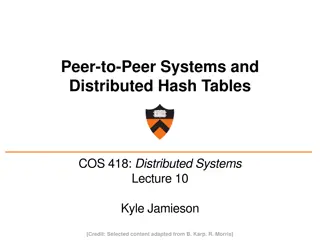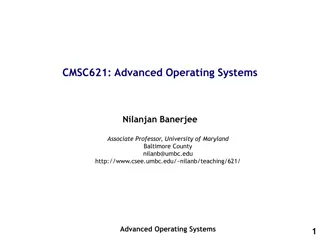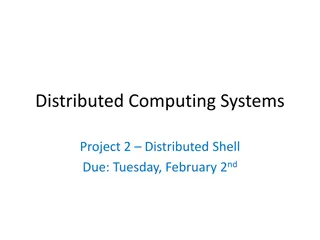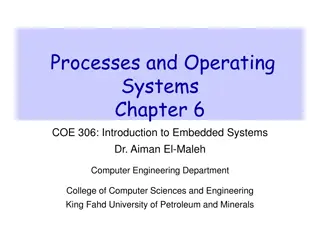Overview of Distributed Operating Systems
Distributed Operating Systems (DOS) manage computer resources and provide users with convenient interfaces. Unlike centralized systems, DOS runs on multiple independent CPUs and prioritizes software over hardware. It ensures transparency and fault tolerance, with a focus on software error handling. DOS requires high configuration platforms. Users may not always be aware of multiple computers being used. Various types of Distributed Operating Systems exist, offering unique functionalities.
Download Presentation

Please find below an Image/Link to download the presentation.
The content on the website is provided AS IS for your information and personal use only. It may not be sold, licensed, or shared on other websites without obtaining consent from the author. Download presentation by click this link. If you encounter any issues during the download, it is possible that the publisher has removed the file from their server.
E N D
Presentation Transcript
DISTRIBUTED OPERATING SYSTEM
controls the resources of a computer and provides its user with an interface or a virtual machine that s more convenient to use than bear machine.
opposed to a database system or some distributed application system such as a banking system, another name for a distributed operating system is DIS- CENTRALIZED OPERATING SYSTEM.
Example of a centralized (not distributed) operating system are; MS- DOS, UNIX, and CP/M.
but runs on multiple, independent, central processing unit (CPU). The key concept in distributed operating system is the TRANPARENCY. What determine a distributed operating system are the software and not the hardware.
made to tolerate both hardware and software error but it is the software error and not the hardware that cleans the error when it occurs.
Distributed OS is also similar to Networked OS but in addition to it the platform on which it is running should have high configuration such as more capacity RAM, High speed Processor. The main difference between the DOS and the NOS is the transparent issue: Transparency:
- How aware are users of the fact that multiple computers are being used?
Types of Distributed Operating Systems
Network OS is built on top of centralized OS.
Handles interfacing and coordination between local OSs.
Users are aware of multiplicity of machines.
- Access to remote resources similar to access to local resources Data Migration transfer data by transferring entire file, or transferring only those portions of the file necessary for the immediate task - Computation Migration transfer the computation, rather than the data, across the system -
workload Hardware preference process execution may require specialized processor - Software preference required software may be available at only a particular site - Data access run process remotely, rather than transfer all data locally -
The Eden Project PROCESS MANAGEMENT Process management provides policies and mechanisms for effective and efficient sharing of a system's distributed processing resources between that system's distributed processes. These policies and mechanisms support operations involving the allocation and de-allocation of processes and ports to processors, as well as provisions to run, suspend, migrate, halt, or resume execution of processes. While these distributed operating system resources and the operations on them can be either local or remote with respect to each other, the distributed operating system must still maintain complete state of and synchronization over all processes in the system; and do so in a manner completely consistent from the user's unified system perspective.
The main goal of distributed system is the enormous rate of technological change in micro processor technology.
powerful and cheap compared with mainframes and minicomputer, so it has become attractive to think about designing large system that composes of many processors.
Relative simplicity of software: each software has a dedicated function.
Unless one is very careful, it is easy for the communication protocol overhead to become a major source of in efficiency.
With distributed systems, a high degree of fault tolerance is often, at least, an implicit goal.
A more fundamental problem in distributed system is the lack of global state information.
It is hard to schedule the processor optimally if you are not sure how many are up at the moment.

























